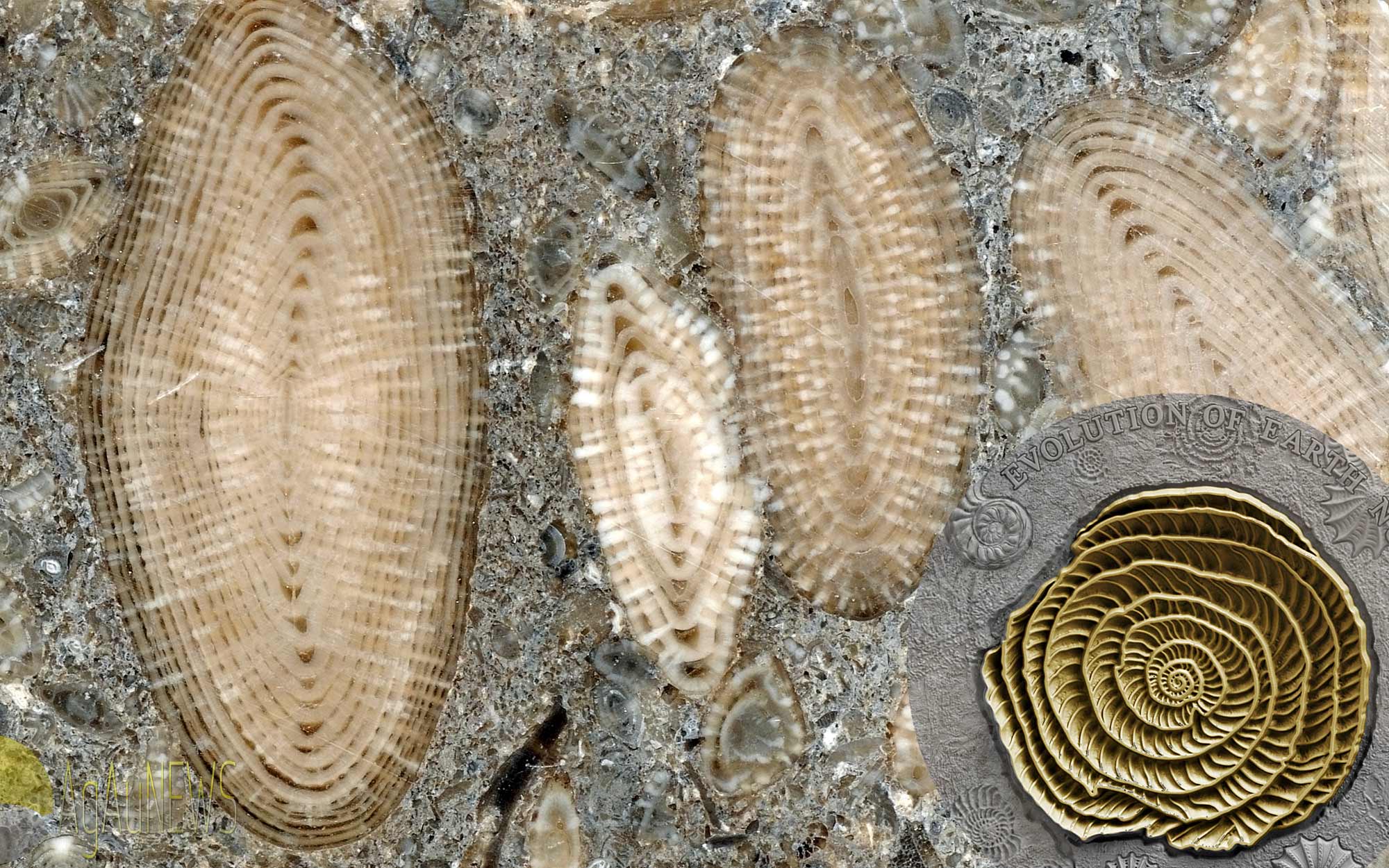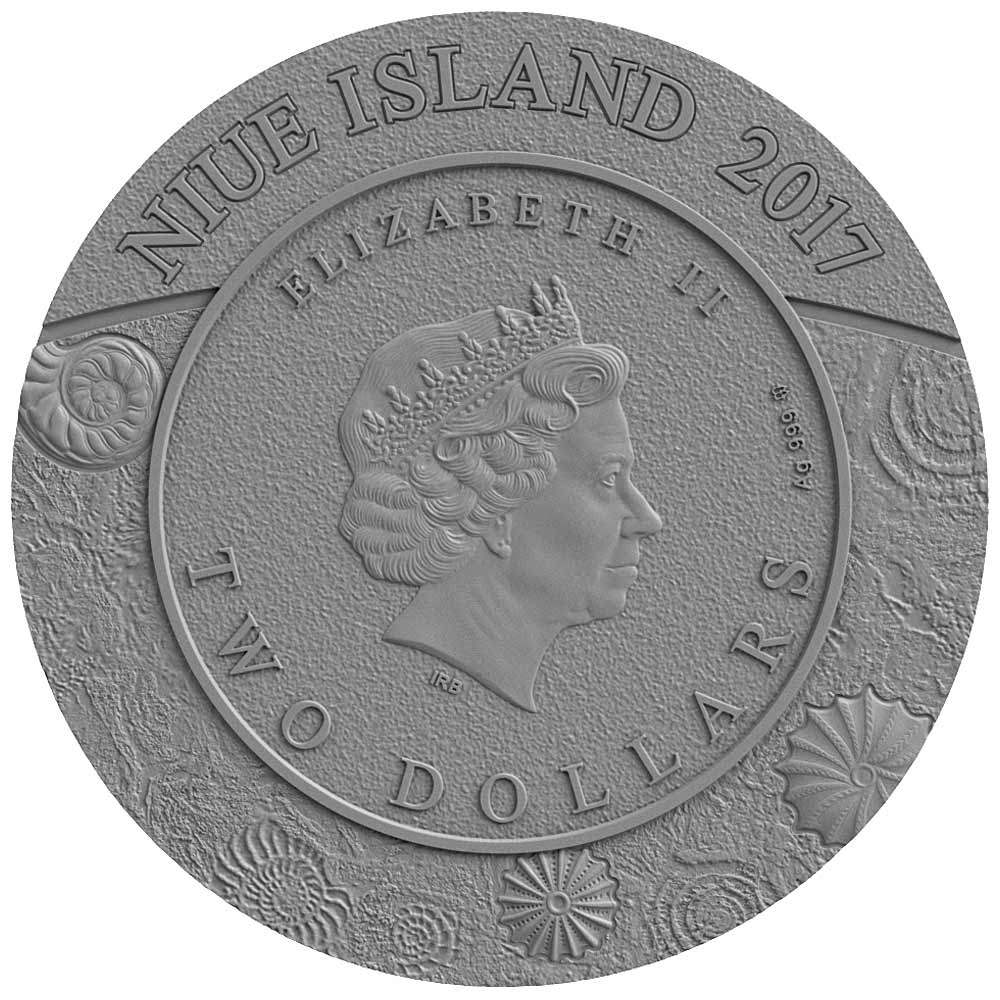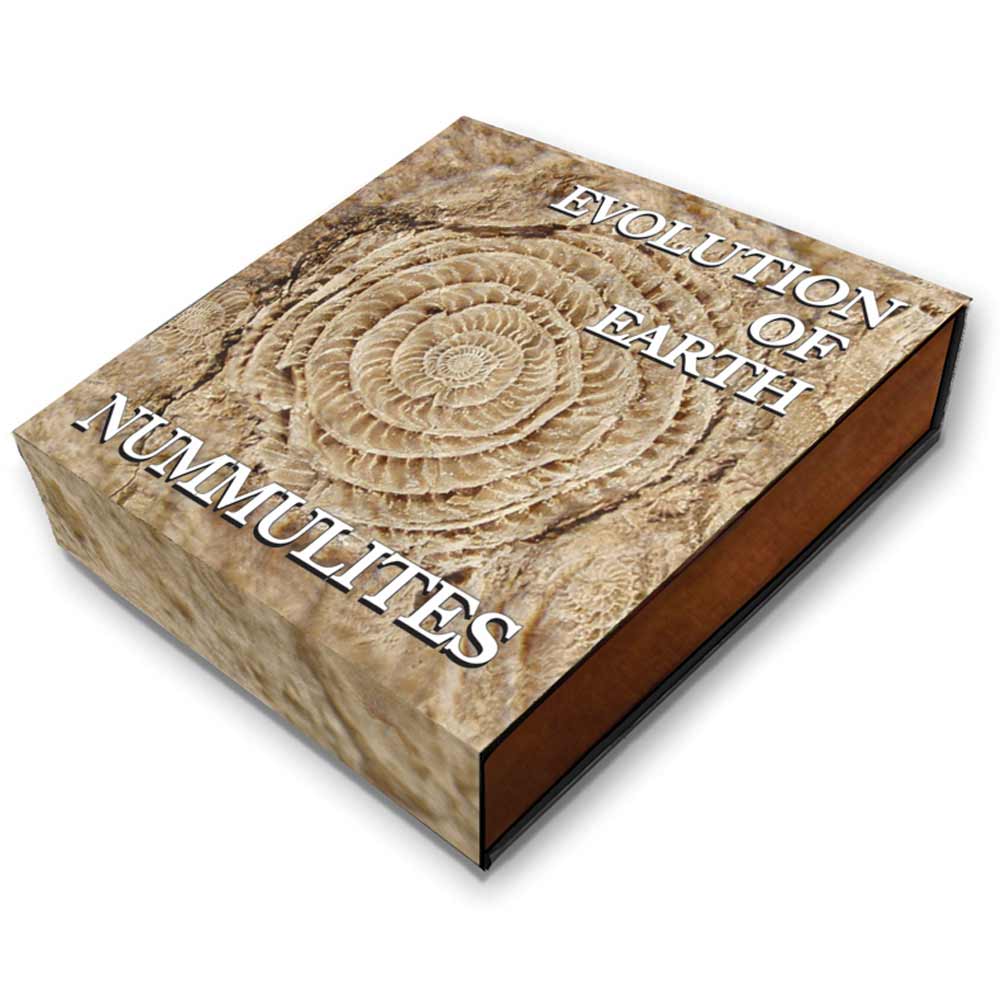Exclusive: Evolution of Earth debuts its second coin with the aptly named Nummulites
With three ranges of fossil-themed coins on the market now, competition has never been higher. That’s a great thing for us as we love the subject matter and many people find it a source of constant fascination. It’s no surprise that Coin Invest Trust (CIT) kicked off the current wave of new coins with their quite superb Evolution of Life, struck in two ounces of fine silver to a high-relief, partly antiqued, and depicting a rose-gold plated ammonite fossil protruding from rock. A second coin featuring a trilobite followed last year.
German mint, MCI have a series out called World of Evolution, one that is less ambitious as a coin, but features an actual fossil attached to the face, quite different from CIT’s effort and the series called Evolution of Earth that we’re looking at here. Debuting last year with a trilobite coin, Evolution of Earth is minted by the Mint of Poland and is very similar to CIT’s series in concept and execution. The first coin also featured a trilobite, and while a fine effort, the design wasn’t quite at the top of the genre. This years coin is a huge improvement and a great design, easily able to hold its own with the best of its type.
This coin features a Nummulite and takes obvious inspiration from the same mints various highly regarded meteorite coins. The high-relief, reaching a good 3.7 mm, easily qualifies for ultra status and while we only have renders at the moment, the brilliant Ares coin showed how close the finished article can look to those. Continuing with ruthenium plating to both sides, the fossil itself is picked out in gold to create a classy look and maintain good contrast. Issued for Niue, the obverse carries the Queens effigy and a range of inscriptions, all set on a fossil bed background, a nice touch.
Struck in two ounces of fine silver, the mintage is limited to 666 pieces. Packaging is of a good quality, a wooden box in a colourred shipper sleeve. A serialised certificate of authenticity is included. Prices should follow the trilobite coin, examples of which can be found at our sponsors Pela-Coins, Powercoin, First Coin Company and Coins Boutique.
2017 EVOLUTION OF EARTH 02: NUMMULITES SILVER COIN
NUMMULITES are Foraminifera, single celled lifeforms with shells called tests because they are often covered with protoplasm. Despite being single-celled, they can reach quite extraordinary sizes, starting at just 100 micrometres and heading up to 20 centimetres. Nummulites vary from 1.3 – 5 centimetres and are lenticular in shape, the Foraminifera in general exhibiting a huge variety of forms.
Nunnulites were very abundant during the Paleogene and Neogene periods (65.5 to 2.6 mya), reaching a peak during the period 55.8-33.9 mya called the Eocene Epoch. Modern Foraminifera are primarily marine organisms, the majority of the species being benthic (seabed-living) in nature.
Foraminifera are hugely important fossils, being used to date strata worldwide. Dying planktonic Foraminifera continuously rain down on the sea floor in vast numbers, their mineralized tests preserved as fossils in the accumulating sediment. The effectively unlimited supply of these fossil tests and the relatively high-precision age-control models available for cores has produced an exceptionally high-quality planktonic Foraminifera fossil record dating back to the mid-Jurassic, and presents an unparalleled record for scientists testing and documenting the evolutionary process.
PACKAGING AND OBVERSE
Nummulites have intricate designs and it’s an inspired choice for a coin. Their fossils are extremely common in Egypt, some 40% of the Great Pyramid of Giza is actually formed of nummulitic limestone and they can be clearly seen all over the structure, as they can on the Sphinx also.
In ancient times, the disc-shaped fossils were actually used as coins and it was the 5th century B.C Greek historian Herodotus, that actually gave them their name, the latin for coin being nummulus. That explains why coins are called numismatics, it isn’t a coincidence. Sadly Herodotus, who spotted his first one actually in the Great Pyramid, thought they were petrified lentils left by the labourers who built them, thus proving the old adage that smart at something doesn’t mean smart at everything.
The nummulite used for the coin isn’t from Egypt however, but appears to be inspired by one taken from a core sample from an offshore-Tunisia gas field. The original fossil was 14.6 mm in diameter, the one on the coin exceeding that, looking closer to 30 mm across.
| NAME | 2017 EVOLUTION OF EARTH |
| DENOMINATION | $2 New Zealand |
| COMPOSITION | 0.999 silver |
| WEIGHT | 62.2 grams |
| DIAMETER | 45.0 mm |
| FINISH | Ruthenium plated |
| MODIFICATIONS | Selective gilding |
| MINTAGE | 666 |
| BOX / COA | Yes / Yes |







Poland mint has good quality products but no creativity.. they copy everybody: CIT, Artmint, Canadian mint, Numiscollect. I think they should develop their own ideas.
It’s a shame.. 🙁
You are kidding right?
The MoP is maybe the most innovative mint in the world !
The MoP is a brilliant mint, as able as anybody else out there and certainly innovative as their dimensional coins show. I see where Numismate is coming from, but you have to remember that a lot of these coins (Gods / Meteorites / Fossils etc) are commissioned pieces, struck for a third party, so not a subject the mint chose, but rather one they were asked to make.
.
They have lots of clients so it looks like they’re copying many others. The clients are right to get involved in these themes. The risk for smaller clients is great in this market and competing with CIT is a good thing.
So can write only jealous trader, who did not get the coin.